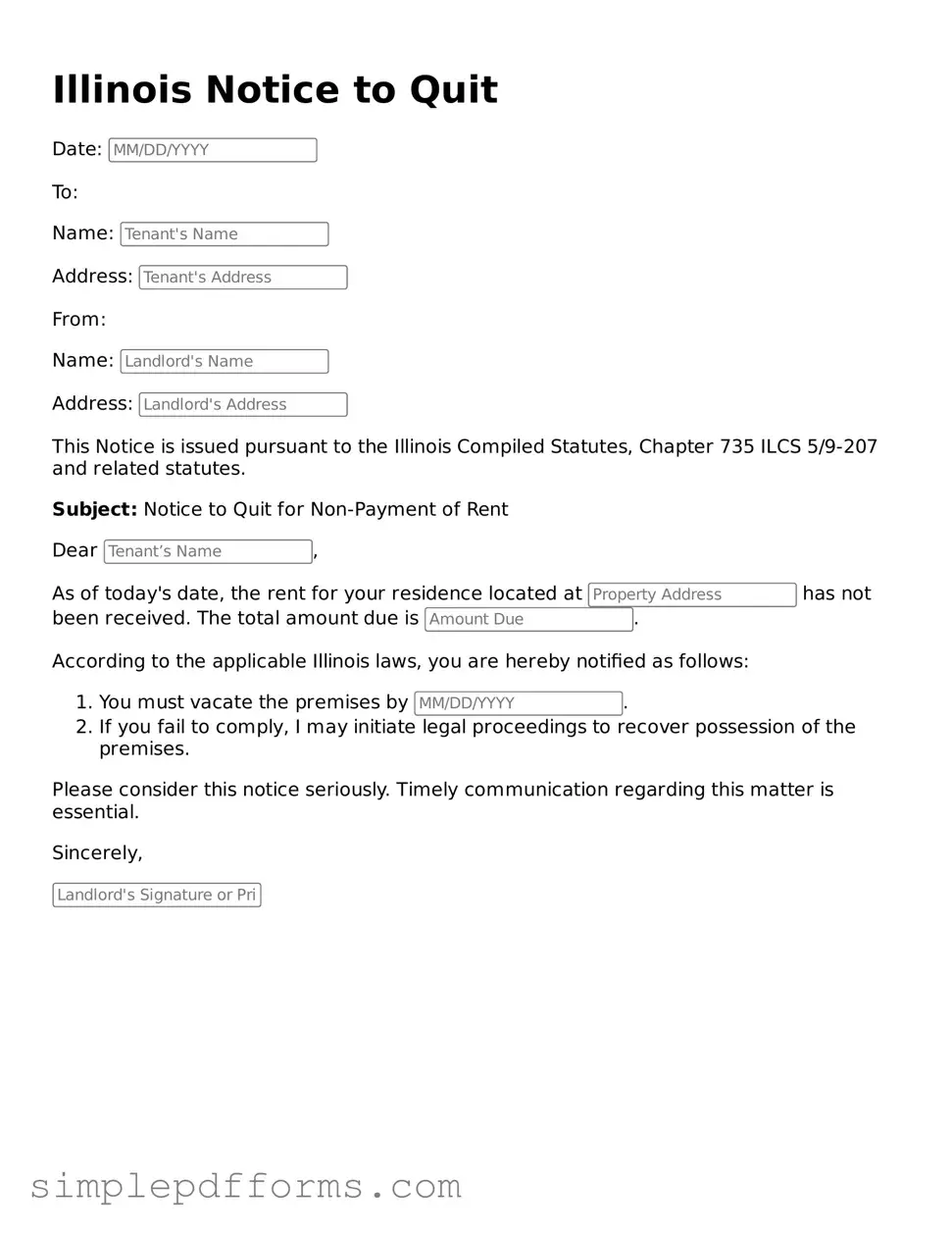Completing the Illinois Notice to Quit form requires attention to detail. Many individuals make common mistakes that can delay the eviction process or even invalidate the notice. Understanding these pitfalls can help ensure the form is filled out correctly.
One frequent error is failing to provide accurate tenant information. It’s essential to include the full name of the tenant as it appears on the lease. Omitting a middle name or using a nickname can lead to confusion and potential legal issues.
Another mistake is not specifying the correct address of the rental property. The address should be complete and accurate. This includes the street number, street name, city, and zip code. An incomplete address can result in the notice being deemed ineffective.
Many people forget to include the date on the form. Without a date, the notice lacks clarity about when the tenant is expected to vacate the property. Always ensure the date is clearly marked.
Some individuals mistakenly select the wrong type of notice. The Illinois Notice to Quit can vary depending on the circumstances, such as non-payment of rent or lease violations. Selecting the incorrect type can complicate the eviction process.
In addition, not providing a clear reason for the eviction is a common oversight. The form should clearly state the reason for the notice, such as “failure to pay rent” or “lease violation.” This information is crucial for the tenant’s understanding and for legal purposes.
People often neglect to sign the form. A signature is required to validate the notice. Without it, the document may not be considered official, and the eviction process could be delayed.
Another mistake involves failing to provide a copy of the notice to the tenant. Simply filling out the form is not enough. The tenant must receive a copy, either in person or through certified mail, to ensure they are aware of the eviction.
Some individuals also overlook the importance of keeping a record of the notice. It’s advisable to retain a copy of the Notice to Quit and any correspondence related to the eviction. This documentation can be crucial if the situation escalates to court.
Finally, not understanding the timeline can lead to issues. The Illinois Notice to Quit specifies how much time a tenant has to vacate the property. Failing to adhere to this timeline can result in complications during the eviction process.
